Project kickoff meetings are to project management what planning tactics and strategy for an upcoming match are to team sports.
Yeah, you can send professional players to the field without a plan and expect them to score some points, but it’s just not a winning strategy. At that point, you’re going out of your way to make it difficult for them to win.
In much the same way, not holding a project kickoff meeting makes it unnecessarily difficult to get projects off the ground, dooming them to suffer from missed deadlines and scope creep, if not outright project failure.
To make sure your kickoff meetings are effective, you should follow this guide — we’ll cover everything you need to know and even provide free templates to help you get going.

In this article:
What is a project kickoff meeting?
A project kickoff meeting is the first meeting held between project team members and the client or executive sponsor.
The purpose of a project kickoff meeting is to lay the groundwork for the project, which includes presenting the:
- Project scope,
- Project background,
- Project purpose,
- Project timeline,
- Project objectives, and
- Roles and responsibilities of everyone involved.

Types of kickoff meetings
While all project kickoff meetings have the same purpose, we can still divide them into these 4 categories depending on the participants:
- Internal project kickoff meetings,
- External project kickoff meetings,
- Agile project kickoff meetings, and
- Executive project kickoff meetings.
Here’s how they’re different.
Internal project kickoff meetings
Internal project kickoff meetings include only internal project team members.
They are organized before internal projects, such as boosting content production or launching an internal company platform.
Team members can use this chance to express and clarify any points of concern and discuss project issues, with the aim of understanding the project goals and objectives.
These meetings are also sometimes held to mark the start of the new fiscal year or the formation of a new team to bolster team confidence and promote the company culture.
External project kickoff meetings
External project kickoff meetings include both team members and external stakeholders — in most cases clients, which is why they’re also known as client-facing meetings.
Team members can use this chance to:
- Discuss the project with the client,
- Align expectations, and
- Establish a system of communication and collaboration.
These types of kickoff meetings are typical for companies that depend on regular client feedback, such as marketing or event planning agencies.

Agile project kickoff meetings
While Agile projects are different from traditional ones once project execution gets underway, there really aren’t any noteworthy differences with regard to their kickoff meetings.
In addition to holding them before the beginning of a new project, you can also hold them when you reach a milestone or onboard a new team member.
Don’t hold a kickoff meeting before every Sprint, though. You just won’t have anything meaningful to add beyond the topics already covered by other Scrum events, like Daily Scrums or Sprint Reviews and Retrospectives.
Executive sponsor project kickoff meetings
Executive sponsor project kickoff meetings are high-level meetings with a focus on establishing project goals and objectives. Their goal is to get executive sponsors on the same page and discuss the project’s business purpose and how it matches the company’s interests.
During these meetings, project managers should summarize key project information relevant to the executive sponsors and avoid details such as individual project milestones or the roles of all team members.
These meetings are held when you need to reflect on a project roadmap or software deployment.

11 steps toward an effective project kickoff meeting
Every kickoff meeting is different, and its agenda should reflect this based on the type of project and the participants.
A kickoff meeting with your team should cover all the nitty-gritty details of the projects, whereas a kickoff meeting with a client should focus more on the goals, objectives, and desired outcomes of the project.
Whatever the case, though, there are some steps that you should refer to when running a project kickoff meeting.
#1 Get ready for the kickoff meeting
While the goal of the kickoff meeting is to prepare the team for project execution, it, too, requires some prepping.
To prepare for the kickoff meeting, make sure to do the following:
- Make a list of invitees — Keeping the type of kickoff meeting in mind, you should create a list of all relevant attendees.
- Organize a pre-kickoff meeting with your team — In case of client-facing meetings, consider first holding a meeting with internal team members where you’ll introduce them to the project, the client, their background, and expectations.
- Set the time, date, and location — Make sure all the attendees know when and where the meeting will take place.
- Assign a note-taker — Pick a person to write meeting minutes. All the important points should be recorded in case some of the invitees cannot attend.
- Obtain detailed project information — By now, you should already have a project charter. This document gathers information on project goals, deliverables, and much more, so it’s good to have it around.
- Send out an agenda — Create a clear agenda of everything that will be discussed and send it out to all participants. Feel free to include the project plan and timeline in the agenda as that will allow the attendees to think about the project in advance and prepare questions to ask during the meeting. We’ve made an agenda template you can get near the bottom of this guide.
- Prepare documentation and check equipment — Make available all relevant documents that you are planning to share with attendees so that everyone has a copy or online access to them. Also, don’t forget to check if the equipment you’ll be using works properly.
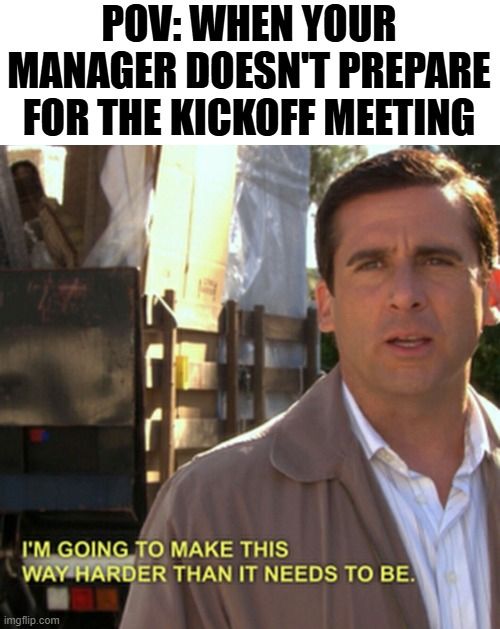
#2 Make introductions
Start the meeting by having everyone introduce themselves, if all attendees aren’t already acquainted with one another.
This is especially important if some participants are new to the team or don’t know the client. The client should also introduce themselves and share their perspective on the project.
They should state their names, positions, relevant experiences, etc.
You might want to prepare some icebreaker questions to dispel the anxiety. This will create a relaxed atmosphere and help build rapport among the participants.
#3 Start with the project background and purpose
The beginning of the project kickoff meeting should focus on the project background and purpose. In client-facing meetings, the client should also share their expectations. This lets the team understand why the project is being undertaken and how it contributes to the company and/or the client.
You should also take this opportunity to define what success looks like and how you should measure it. Once the team actually understands what problem the project needs to solve and why, they’ll be more focused on their efforts and more likely to succeed.
#4 Share the project plan
Once you’re done with the project background and purpose, you should move on to the project plan review.
If you have shared the project plan within the agenda, the participants should already be familiar with all the key information like the project timeline and priority goals.
The idea isn’t to cover all the project minutiae — instead, you should make sure that everyone understands big-picture items like project deliverables, milestones, and the budget.
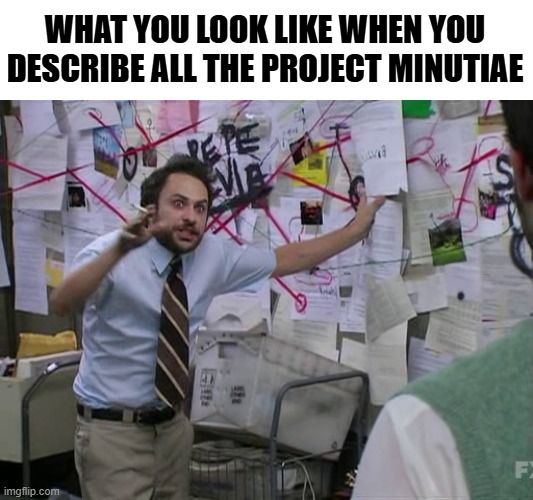
#5 Define roles and responsibilities
After analyzing the plan, you should determine each team member’s role and responsibilities. To avoid confusion and misunderstandings, it’s imperative that everyone understands where they fit.
The kickoff meeting is the perfect time to get this work organization sorted out since making a point of who organizes tasks, who reports issues and to whom, and who is in charge of managing project-related paperwork now will save you a lot of time (and headaches) later.
This is especially important for new teams or in cases where teams from different departments need to collaborate on the same project.
#6 Define the methodology you’ll use on the project
The next step is to inform the project participants about which project management methodology you’ll be using for this project.
You definitely should follow a defined methodology as, according to project management statistics, projects that don’t are 15% less likely to meet goals and stay within budget and 16% less likely to get done on time.
That said, which methodology you go with will depend on the nature of the project and what it’s trying to accomplish.
For example, Waterfall project management, with its sequential phases and a low tolerance for backtracking, is ideal for construction and manufacturing projects, where it’s physically impossible (or extremely difficult) to adjust anything that has already been done.
Conversely, Agile project management frameworks, which allow for iteration, are great for software development, which isn’t bound by the same physical limitations as hard concrete.
💡 PLAKY PRO TIP
There are a bunch of methodologies between Waterfall and Agile that may suit your project better than either of these:
#7 Pick suitable project management software
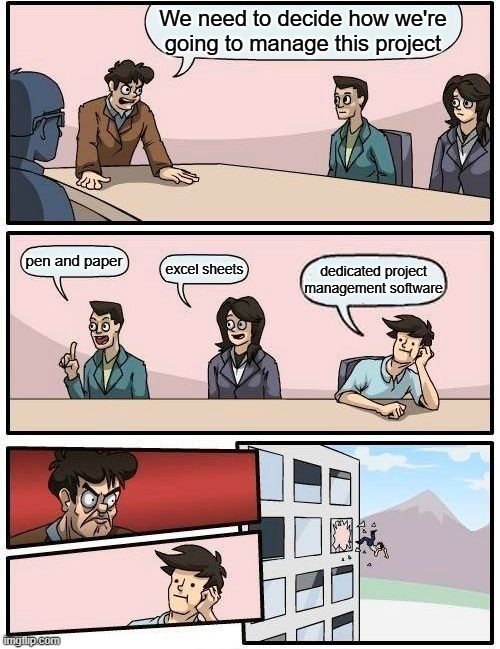
This meeting is also the right opportunity to inform the participants about the project management software (and any other software) that you’ll be using.
For internal projects, this step will likely be redundant since companies don’t change software frequently. However, in client-facing meetings, you can and should use this opportunity to walk them through the software that you’ll use and explain how they’ll interface with it.
For example, if you’re using Plaky, you can explain how this software supports:
- Task delegation,
- Notifications,
- Progress tracking,
- Sorting,
- In-task communication, etc.
Plaky is a good choice for client projects because of its viewer role. Viewers can read all content in the spaces they’re invited to, but don’t have any editing permissions — perfect for clients who want to get a feel for how the project is progressing.
What’s more, it doesn’t cost you anything to invite viewers — instead, you get to invite 5 viewers per paid user. So, for every member of your project team, you’ll be able to host 5 clients concurrently, which is more than you’ll ever realistically need.

#8 Analyze potential risks
The unfortunate reality of project management is that things don’t always go as planned. That’s why it’s important to analyze and manage risks.
The first step in risk management is to identify risks, and the project kickoff meeting is the ideal opportunity to do this.
Ask attendees what potential risks they can think of and how they might be mitigated. Then document the risks and keep track of them.
💡 PLAKY PRO TIP
Check out the following links to learn more about project risks and risk management:
#9 Take questions
Make sure to leave time toward the end of the meeting for participants to ask questions.
No matter how detailed you may have been during the meeting, there will always be some ambiguities left.
It’s best to clear them all up immediately so that the participants aren’t left with any doubts or concerns. After all, the goal of this meeting is to have the people involved understand the project and their role in it.
Leaving questions unresolved will come back to bite you.

#10 Outline the next steps
Before ending the meeting, make sure to outline what the next steps will be. You don’t want the participants to know what the project is about, what software you’ll be using, and what risks it might incur, without them also knowing what they’re supposed to do now.
So, share relevant contact information, useful documents, and other resources. Also, delegate action items and recap the main points.
This will help you close the meeting on a positive note and get the team ready for action.
#11 Do a post-meeting wrap-up
By this point, the meeting itself should be over. But there are still some things you can do to guarantee its effectiveness, such as:
- Sending a thank you email to all the attendees,
- Sharing the meeting recording or transcript,
- Sending a short summary of the topics discussed, and
- Asking if anyone has any further questions.
Once you’ve established all the vital information about the project through these 11 steps, you’ll be ready to start working on your project.
Project kickoff checklist and agenda
Two useful documents that can help make your project kickoff meetings more effective are the project kickoff checklist and the project kickoff agenda — both of which we’ve provided free templates for.
The project kickoff checklist is a list of tasks that you need to complete during the meeting. The template below lists the 11 steps outlined in this guide, but you can customize it to your liking.
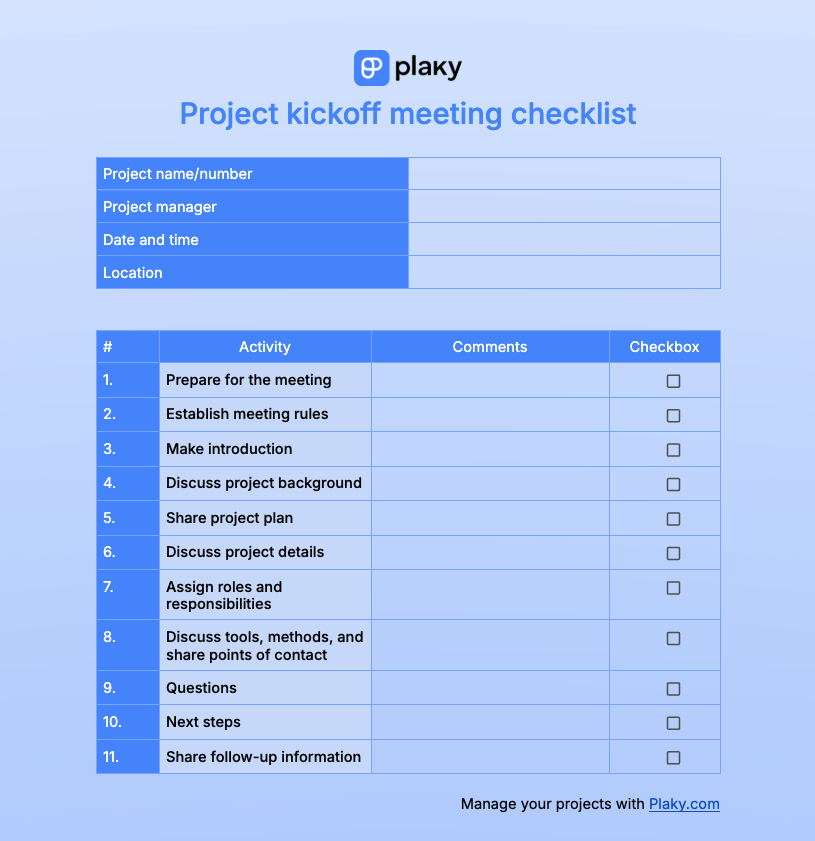
Get our free project kickoff meeting checklist template
The project kickoff agenda is a document that you can send to all participants ahead of time to help them prepare for the meeting, stick to the plan, and avoid chit-chat. The agenda template we’ve prepared includes:
- The location, date, and time of the meeting,
- A list of attendees and their contact information,
- A list of the steps that will be covered during the meeting, and
- A stopwatch to measure the duration of every step in the meeting agenda.
You can, of course, customize it to your liking.
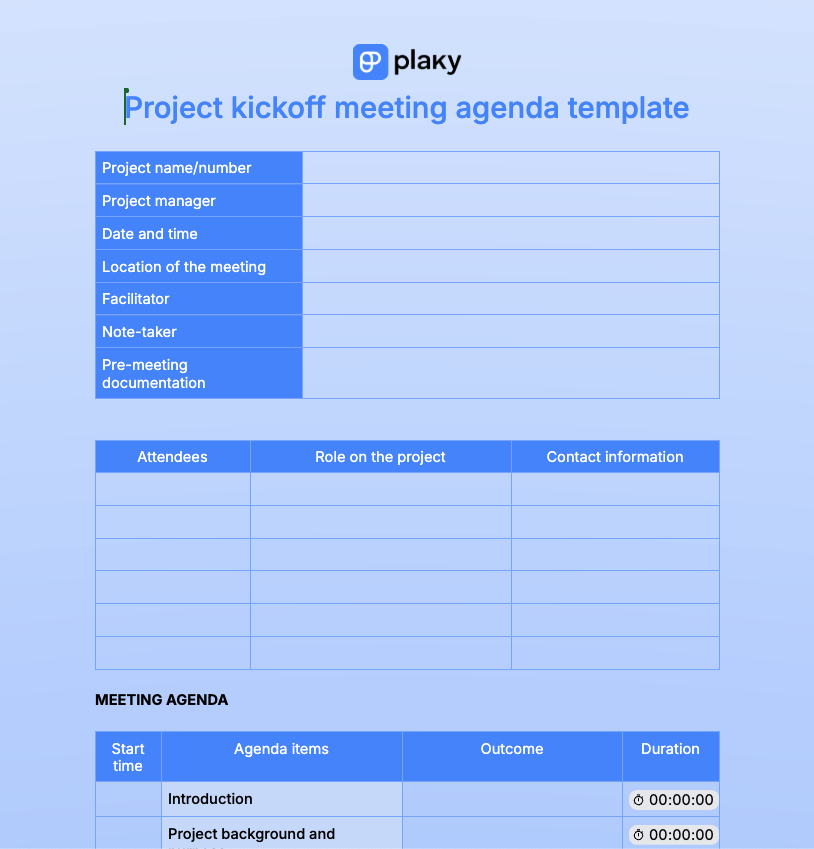
Get our free project kickoff meeting agenda template
From kickoff meeting to project completion — improve project performance with Plaky
At the beginning of this guide, I compared kickoff meetings in project management to planning strategy and tactics in team sports matches, emphasizing the importance of proper preparation for a successful outcome.
However, your players still need to go onto the field and execute that plan to win. It’s not like preparation equals outcome — during the match, they’ll encounter setbacks, be forced to improvise, and make clutch plays.
In other words, the work doesn’t stop after the kickoff meeting. That’s why I strongly recommend using project management software to keep track of progress and manage workloads throughout the entire project — y’know, to actually accomplish what you agreed to during the meeting.
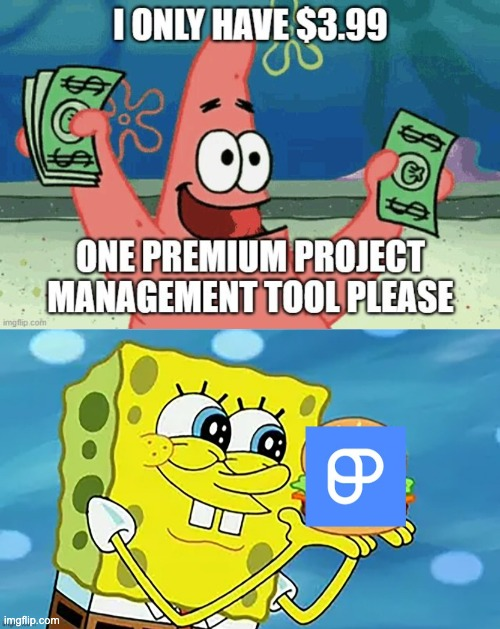
And Plaky is the best tool to use for this.
With support for Table, Kanban, and Gantt views, Plaky allows you to visually customize your workflow to best support the methodology you’ll be using for your project. What’s more, each default table board can be visualized in a different view, so different departments can go for a view that fits their specific needs.

Plaky also supports unlimited users, boards, tasks, and projects, even on its free plan. This means that it will never hold your projects and productivity hostage when you want to add more users or tasks. So, instead of worrying about future scalability, you can just focus on the project at hand — assign tasks, set deadlines, and measure progress.
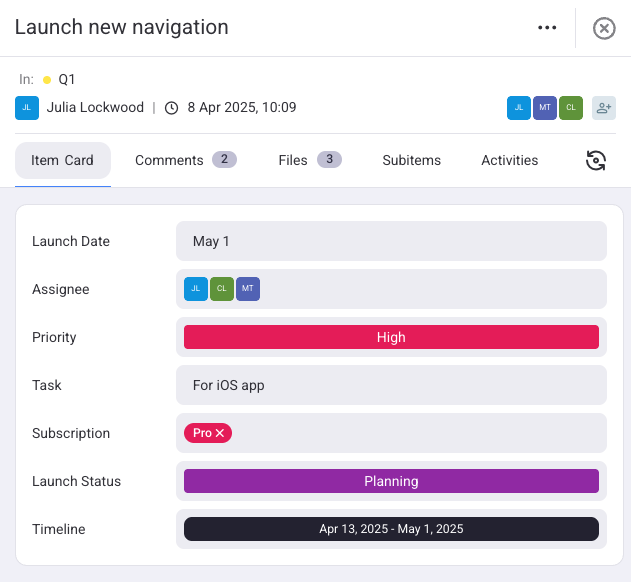
Kickstart your project execution and monitoring with Plaky. Sign up for free now!

